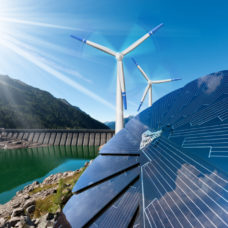Sub-Saharan Africa is energy poor with an estimated two out of every three people in the region having no access to electricity. Experts say that this energy poverty is undermining economic development in the area. A paper by the Joint Research Centre published in the journal Nature Energy identified existing energy infrastructure and what it would take to utilize and improve it in order to bring 1.1 GW of power into the region.
In Tanzania, for example, as much as 85 percent of households have no access to electricity, and in Nigeria, the figure is close to 50 percent. Without much energy infrastructure, the largest source of power comes from biomass fuels such as firewood, which is time-consuming and labor-intensive to produce. Also, the smoke produced from burning firewood is a cause of respiratory disease, which adds to the burden on an already limited health care system.
“This low-cost and low-risk approach would only require a new investment of only €1-1.5 billion but add 1.1GW power capacity.”
The Burden of Power
According to International Energy Agency, Sub-Saharan countries would need to invest a total of $602 billion USD or $30 billion USD per year to provide universal energy access by 2030. Given the high levels of economic underdevelopment in the region, it is doubtful that Sub-Saharan Africa could raise the necessary resources to do so.
The IEA’s estimates are based upon building new energy infrastructure in Sub-Saharan African. Given the state of the economy in the region, new energy development would likely force countries to take loans that they might default on -a common hindrance to developing nations trying to improve their economy.
A Rejuvenation of Existing Energy Infrastructure
According to a JRC, Sub-Saharan Africa can make available more power to its population by using existing yet unexploited energy infrastructure. The study’s authors developed multi-layered spatial analysis and identified rural power grids by analyzing satellite images.
JRC highlighted three categories of energy infrastructure. First, unpowered dams that could be turned into hydroelectric power facilities. Second, rural power grids that could integrate photovoltaic solar paneling. Finally, coal-burning power plants that could use biomass like sugarcane residues separately or combined with coal.
This low-cost and low-risk approach would only require a new investment of only €1-1.5 billion but add 1.1GW power capacity.
The paper uses Mauritius as an example, which receives almost half of its energy from burning sugarcane residues. When the crop is out of season, the island nation reverts back to burning coal.
Like vertical farming and rooftop solar, plans like these make great use of existing resources. If the region utilized its infrastructure better, the JRC estimates than an additional 2 to 3 percent of the population would access electricity. While the number might appear small due to the enormous lack of energy availability, this project illustrates that there are affordable steps for Sub-Saharan Africa to take.










Comments (0)
Least Recent